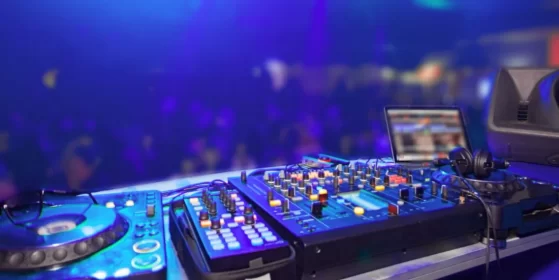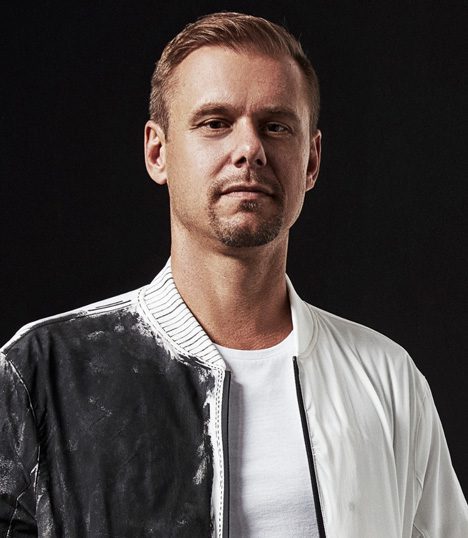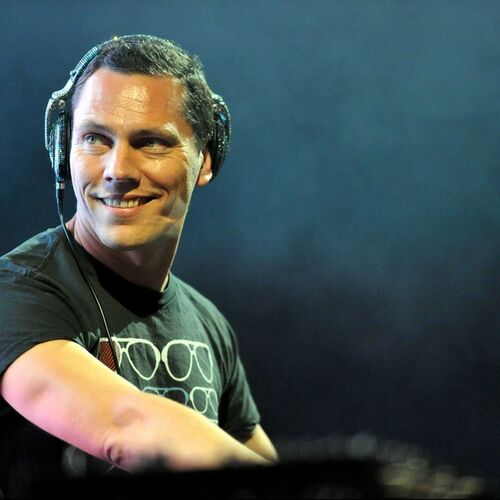
The History Of Trance Music
Table Of Content
- Introduction
- Early Origins
III. Development of Trance Music
- Evolution of Trance
- Trance Subgenres
- Trance Music in Pop Culture
VII. Trance Music Today
VIII. Notable Trance Producers
- Conclusion
Introduction
Trance music has become one of the most popular genres of electronic dance music today, and its history is as varied and interesting as its sound. This article will explore the origins and development of trance music, its evolution over the years, its subgenres, its influence on popular culture, its current state, and its notable producers.
It is characterized by a repetitive, driving beat and usually features layered, hypnotic melodies and often uplifting and inspirational lyrics. Many modern DJs, producers and record labels have embraced trance music, making it one of the most popular genres of dance music around the world.
Trance music evolved from the underground club scene in the 1990s and early 2000s, and it draws its influences from a variety of dance genres, including house, techno, progressive house, and minimal techno. It also has strong ties to psytrance and goa trance, two distinct subgenres of trance music. Trance music is often characterized by its uplifting, melodic, and emotional sound. It is characterized by a fast tempo and often includes arpeggiated synths, heavy percussion, and layers of sound. It is often associated with a euphoric, almost spiritual feeling and is known for its ability to take the listener on a journey.
Trance music has a wide range of tempos, ranging from around 120-150 BPM. It is often divided into two main categories: Uplifting Trance and Progressive Trance. Uplifting Trance focuses on emotional melodies and uplifting breakdowns, while Progressive Trance is more of a driving, energetic sound with a focus on longer builds and breakdowns.
Trance music has had a major influence on the dance music scene since the early 2000s and continues to be one of the most popular genres of dance music. It is widely popular in clubs and festivals around the world and is often featured in film and television soundtracks. Many of the world’s top DJs and producers have released trance music and it continues to be one of the most popular genres of dance music.
Early Origins
Trance music has its roots in the early 1990s, when it emerged as a distinct genre of electronic dance music. It was initially a combination of techno, house, and ambient music, and was heavily influenced by the rave culture of the time. Trance was particularly popular in Germany and the UK, where it was played in nightclubs and on the radio.
Trance music has been around for centuries, and its early origins can be traced back to traditional African, Indian, and Middle Eastern music. This style of music has been used for centuries to induce a trance-like state in the listener, allowing them to connect more deeply with their inner selves and the universe. In modern times, trance music has become a popular genre of music, but its early roots are still evident in the music today.
The earliest known forms of trance music can be traced back to the mid-19th century. These forms were influenced by a variety of different cultures, such as African, Indian, Middle Eastern, and even Latin American. This early music was often used in spiritual ceremonies and rituals, as it allowed the listener to enter a trance-like state and connect to their inner selves and the universe.
The first form of trance music to gain international recognition was Goa trance, which was created in the late 1980s in India. This style of music was heavily influenced by the psychedelic music of the 1960s and 1970s and combined hypnotic rhythms with psychedelic sounds. Goa trance quickly became a global phenomenon, with artists and fans flocking to India to experience the music firsthand.
The 1990s saw the rise of progressive trance music, which was heavily influenced by the sounds of techno and house music. This style of music was characterized by more melodic and uplifting sounds, which allowed the listener to enter a euphoric state of mind. This style of music quickly gained popularity in the UK and Europe, and it soon spread across the world.
Trance music has come a long way since its early origins and has evolved into a popular genre of music. While its early roots can still be heard in modern trance music, it has also been heavily influenced by other genres such as techno, house and even pop music. With its combination of hypnotic rhythms, melodic sounds, and uplifting energy, it’s no wonder why trance music has become so popular with listeners all over the world.

Development of Trance Music
Trance music developed rapidly in the mid-1990s, with producers such as Paul van Dyk, Robert Miles, and ATB leading the way. These producers helped to define the sound of trance, which became known for its soaring melodies, driving basslines, and hypnotic rhythms.
Trance music has been shaped by the evolution of technology, and this has allowed for a more complex sound. Synthesizers, samplers, and drum machines were used to create a more layered sound, and this allowed for the addition of more intricate melodies and beats. The use of technology has also allowed for the creation of a more layered and immersive listening experience.
The development of trance music has seen the emergence of a number of sub-genres. These include progressive trance, vocal trance, hard trance, uplifting trance, and tech trance. Each of these styles has its own unique elements, and they all have their own fan bases.
Another major factor in the development of trance music has been the emergence of trance festivals. These events have become increasingly popular, and they attract thousands of fans from all over the world. These festivals provide a platform for artists to showcase their skills and for fans to experience the music in a live setting.
Trance music has also been shaped by the internet. The internet has allowed for the sharing of music and the formation of online communities. This has allowed for the genre to spread to different countries and for fans to keep up to date with the latest releases.
The development of trance music has seen some major changes in the last 30 years. Technology has allowed for more complex sounds, and this has allowed for the emergence of a number of sub-genres. The internet has allowed for the sharing of music and the formation of online communities. Trance festivals have also become increasingly popular and they provide a platform for artists to showcase their skills and for fans to experience the music in a live setting. Trance music has come a long way since its inception, and it is sure to continue to evolve and develop in the future.
Evolution of Trance
Throughout the late 1990s and early 2000s, trance music continued to evolve, with producers experimenting with different styles and sounds. This period saw the emergence of trance subgenres such as uplifting trance, progressive trance, and vocal trance.
In the early days, trance was a subgenre of techno and was characterized by its repetitive 4/4 beat and synthesized sounds. This early form of trance was heavily influenced by the sounds of German and Dutch producers such as Sven Väth, Ralf Hütter, and Paul van Dyk. This style of trance was often used for extended dancefloor sets, and was a major influence in the development of the rave scene in the late 80s and early 90s.
By the mid-90s trance had become more melodic and had evolved into a more commercial sound. This new sound was popularized by artists like Paul Oakenfold, Gouryella, and William Orbit. This new sound was characterized by lush, melodic synths and driving percussion. It was this sound that defined the sound of the late 90s and early 2000s, and was popular on both the club and radio scene.
In the late 2000s, the sound of trance underwent a major transformation. This new sound was characterized by its uplifting, epic soundscapes and atmospheric synths. This sound was popularized by artists such as Armin van Buuren, Above & Beyond, and Gareth Emery, and was a major influence in the evolution of EDM. This style of trance was incredibly popular in the early 2000s and was a major influence on the sound of contemporary EDM.
Today, trance is still going strong. While it may not be as mainstream as other genres of EDM, it still has a very dedicated fan base. The sound of trance continues to evolve, incorporating elements from other genres such as house, techno, and progressive house. Trance is an ever-evolving genre that continues to captivate audiences all over the world.
Trance Subgenres
Trance has since spawned numerous subgenres, each with its own distinct sound. Uplifting trance is characterized by its energetic melodies and uplifting chords, while progressive trance is known for its slower tempo and progressive structure. Vocal trance, meanwhile, is characterized by its use of vocals and vocal samples.
Trance Music in Pop Culture
Trance music has become increasingly popular over the past few years, with many pop stars and producers incorporating it into their music. Notable examples include Avicii’s hit song “Wake Me Up”, which fused trance music with folk elements, and Calvin Harris’ “Acceptable in the 80s”, which combined trance music with pop and electro.
Trance has become a major part of EDM (electronic dance music) culture, with a variety of subgenres such as progressive trance, tech trance, and uplifting trance. Artists like Armin van Buuren, Tiesto, and Paul van Dyk have become household names in the trance world, and their music is often heard in clubs and at festivals around the world. Trance is also often featured in video games, with titles like “Dance Dance Revolution” and “Guitar Hero” featuring a variety of trance tracks.
Trance music has also been featured in films and television shows. Movies such as “The Matrix” and “The Fifth Element” have featured trance soundtracks, and television shows such as “CSI” and “Grey’s Anatomy” have included trance tracks in their episodes. Trance has also been featured in video game soundtracks, with titles such as “Grand Theft Auto: San Andreas” and “The Sims 3” featuring trance music.
Trance is a unique and captivating genre of music that has been embraced by pop culture. Its energetic beats and dreamy soundscapes have made it a popular choice for soundtracks, television shows, and video games. Trance has also become a major part of EDM culture, with its own subgenres and a variety of popular artists. Trance is sure to remain a major part of pop culture for years to come.
Trance Music Today
Trance music is still as popular as ever, with new producers and DJs emerging all the time. The genre has become increasingly diverse, with producers experimenting with different sounds and styles. Trance music has become increasingly popular over the past few years and is now featured in clubs, festivals, and radio stations all over the world. It has also become a favorite of DJs and producers, as it is a genre that can be adapted and changed to fit any kind of atmosphere. As the popularity of trance music continues to grow, it is likely that it will remain one of the most popular forms of electronic dance music for years to come.
Trance music is a powerful, dynamic form of music that can be used to evoke a variety of feelings and emotions in listeners. Whether you are looking for an uplifting, energetic track to get you through a workout or a more subtle, ambient track to ease you into a relaxed state, trance music has something to offer. With its growing popularity, it is likely that trance music will remain a staple of electronic dance music for years to come.
Notable Trance Producers
There have been many notable producers of trance music, including Paul van Dyk, Armin van Buuren, Tiesto, Paul Oakenfold, ATB, and Ferry Corsten. These producers have helped to shape the sound of trance, and have been hugely influential in the genre.
Notable trance producers have made a significant contribution to the genre and the music industry, and have helped to shape the sound of trance music. Paul van Dyk is one of the most influential trance producers of all time, having won multiple awards and released numerous albums. He is credited with bringing a new level of sophistication and musicality to the genre, as well as popularizing the use of samples and loops. Other influential trance producers include Tiesto, Armin van Buuren, Above & Beyond, ATB, and Paul Oakenfold.
Tiesto is widely regarded as one of the most successful and influential trance producers of all time. He has released seven studio albums, and has collaborated with some of the most prominent names in music, including Burt Bacharach, Pet Shop Boys, and Moby. He has also won numerous awards, including two Grammy Awards and two MTV Europe Music Awards.
Armin van Buuren is another major figure in trance music and is widely considered one of the most successful DJs of all time. He has released six studio albums, and has won numerous awards, including five International Dance Music Awards and two DJ Awards. He is known for fusing various styles of electronic music, including trance, house, and tech-trance.
Above & Beyond are a British electronic music group who have released five studio albums and are widely regarded as one of the most successful trance acts of all time. They have won numerous awards, including two International Dance Music Awards, and have a large following among EDM fans.
ATB is a German trance producer and DJ who has released eight studio albums and has collaborated with some of the biggest names in music, including Tiësto, Armin van Buuren, and Paul van Dyk. He is known for his melodic and uplifting sound, and is widely regarded as one of the most influential producers in the genre.
Paul Oakenfold is another iconic trance producer who has released five studio albums and collaborated with some of the biggest names in music. He has also won numerous awards, including two International Dance Music Awards, and is widely considered one of the most influential trance acts of all time.
In conclusion, trance producers have made a significant contribution to the music industry and have helped to shape the sound of trance music. Paul van Dyk, Tiesto, Armin van Buuren, Above & Beyond, ATB, and Paul Oakenfold are some of the most successful and influential trance producers of all time, and are responsible for bringing a new level of sophistication and musicality to the genre.



Conclusion
Trance music has come a long way since its inception in the early 1990s, and it continues to evolve today. Its influence on popular culture has been immense, and it has spawned numerous subgenres and festivals. Trance music is sure to remain popular for many years to come.
Playlist with modern Trance Music



